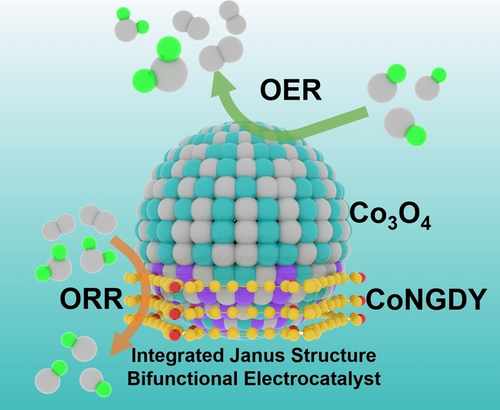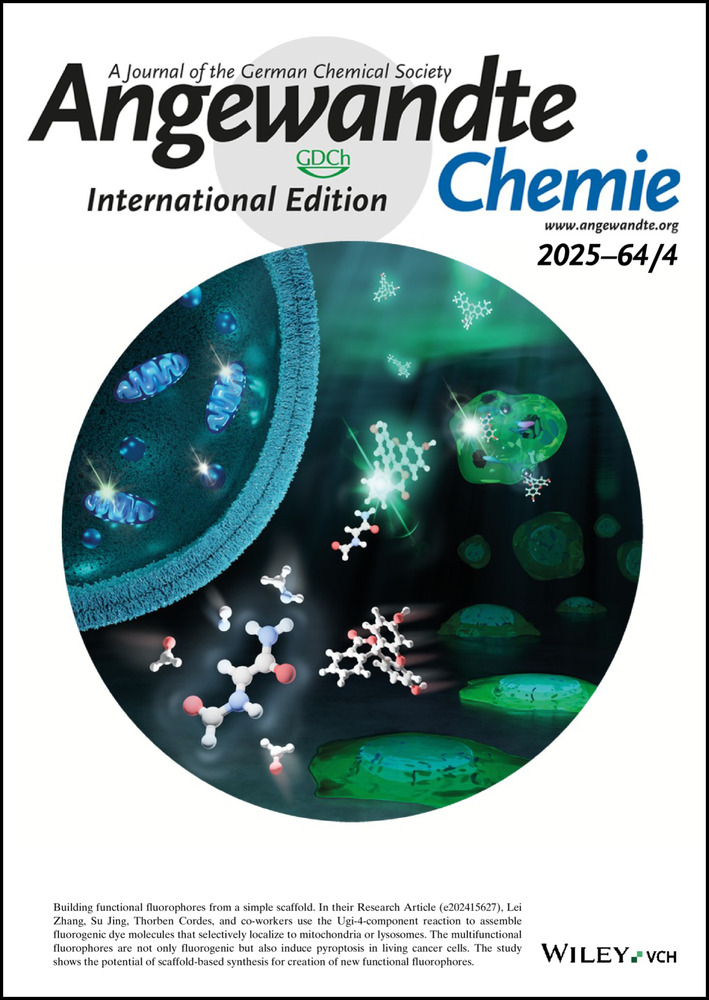Self-Organized Integrated Electrocatalyst on Oxygen Conversion for Highly Durable Zinc-Air Batteries
Graphical Abstract
A bifunctional electrocatalyst (Co3O4/CoNGDY) with integrated Janus structure for oxygen reduction reaction (ORR) and oxygen evolution reaction (OER) is in situ constructed through a self-organized method. The active sites and mechanism are confirmed by in situ characterizations and theoretical calculations. Aqueous zinc-air batteries with ultra-long stability and recoverable modularized cylindrical solid-state zinc-air batteries are achieved.
Abstract
Efficient bifunctional electrocatalysts for oxygen reduction reaction (ORR) and oxygen evolution reaction (OER) are key for clean energy applications such as rechargeable metal-air batteries. Highly efficient bifunctional electrocatalysts have been the focus of great attention by scientists. Here, an innovative and continuous growth method is established to fabricate integrated Janus structure Co3O4/CoNGDY catalyst, which can work for bifunctional oxygen catalytic conversion, achieving highly durable zinc-air batteries. Embedded in the hydrangea-shaped N-doped graphdiyne (NGDY), the Co3O4/CoNGDY is self-organized by CoNGDY at the NGDY contact sites and Co3O4 at the upper part, in which Co3O4 works as OER catalyst and CoNGDY acts as ORR catalyst. Due to the incomplete charge transfer within integrated structure, NGDY reduces the d-band center of the Co sites, so the adsorption strength of intermediates is balanced, and the catalytic activity for ORR/OER is increased. The Co3O4/CoNGDY can serve as an efficient air electrode of rechargeable zinc-air batteries. The rechargeable Co3O4/CoNGDY-based aqueous zinc-air batteries demonstrate excellent performance with a high specific capacity of 746.8 mAh g−1 and an extremely long lifetime of more than 5000 hours. The recoverable modularized cylindrical Co3O4/CoNGDY-based solid-state zinc-air batteries with a power density of up to 167.6 mW cm−2 can be achieved.
Conflict of Interests
The authors declare no conflict of interest.
Open Research
Data Availability Statement
The data that support the findings of this study are available in the supplementary material of this article.





